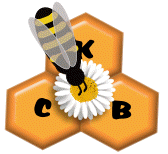Jobs for each Month
January
- Check stores by hefting hives regularly – feed fondant if losing weight
- Clear snow and check for dampness
- You may want to treat again for Varroa (possibly Oxalic acid trickle method to treat any remaining Varroa)
- Clean/sterilise supers, equipment & clothing – Click here to download National Bee Unit leaflet.
February
- Prepare spare brood/super frames (Click here for Thorne’s assembly video). Do not put foundation in frames until ready to use.
- Clear away any dead bees blocking entrances
- In mid-late Feb start to feed approx 500ml (1 pint) of Ambrosia/Sugar syrup every week to 10 days. Do not replenish until all has been taken down.
- Feed Nektapoll/Candipollen Gold when bees are more active if there is a pollen shortage. Stop feeding when bees are returning with pollen.
March
- You may want to change your comb using the “Bailey Frame Change” method.
- Keep feeding approx 500ml (1pint) of Ambrosia every week to 10 days if required, and it is not too cold, else continue with fondant.
- Remove winter covers and mouse guards. Fit alighting boards.
- Check for debris on boards inserted below the mesh floors for signs of hive activity.
- If bees are returning with pollen, then (normally) the Queen is laying.
- Begin hive inspections when temperatures rise above 14oC.
- Find and mark queens.
- Remove and replace brood frames containing old, black, dirty comb.
April
- Complete spring anti-mite treatment before putting on supers.
- Ensure you have enough clean supers ready.
- Monitor for dead bees.
- Hive inspection: look for eggs, larvae, capped cells, good brood pattern, signs of disease, varroa, and queen cells.
- The colony will start to expand rapidly – add supers if required to create more space.
May
- Prepare bait hives. Position bait hives in apiary at least 3 feet off the ground.
- Continue to feed small colonies with stimulative feed until brood increases and good weather is forecast.
- Continue regular weekly inspections for signs of brood congestion (lack of space for queen to lay) which could induce swarming. If your brood boxes are getting full, you may need to create more space using the Demaree method, or Artificial swarm method.
- Prevent swarming at first sight of queen cells: use Artificial swarming or Demaree method, or set up nucs.
June
- Extract OSR honey crop when approx 1/3 of the frames are capped and no drips appear when frames are shaken.
- Store in buckets until set solid, then partially remelt to soften and cream.
- Beware the June/July gap: feed sugar syrup after removing OSR crop if weather is poor and forage limited.
- Continue inspections every 7 days to check the Queen is present and laying. Look for signs of swarming.
- Add supers as required to avoid hive congestion.
- Monitor Varroa mite fall using inserts beneath mesh floors.
July/August
- Extract blossom honey crop.
- Swarming should finish at end of July.
- All drones are evicted at the end of August.
- Queen slows down her egg laying.
September
- Remove all supers and extract final blossom honey crop when Rosebay willow herb is finished.
- Move bees to heather if desired.
- After removing final honey crop feed 2:1 sugar syrup (e.g. 1kg sugar to 630ml water) or ambrosia until bees stop taking it. More info. Adding Hive Alive to sugar syrup prevents it from fermenting in the combs if the bees do not have time to dry it out.
- Apply varroa treatment when all honey has been removed.
- Treat for Nosema
- Watch for robbing, reduce hive entrances.
- Unite small colonies to ensure strong overwintering stocks. Hives should ideally have at least 4 to 5 frames of brood from mid August up to end of September.
October
- Replace Queen excluders with crown boards or fondant feeder boards.
- Stop feeding sugar syrup or Ambrosia when bees stop taking it down.
- Remove alighting boards.
- Reduce entrances and fit mouse guards
- Remove Varroa treatment strips.
- Insulate hives (crown boards) with hessian bags or insulated foam (e.g Thorne’s)
- Put Winter covers on when hives are dry.
- Beekeeper’s holiday time!
November / December
- Occasionally heft hives to check winter stores. Feed fondant if losing weight.
- Check for animal damage.
- Monitor hive entrance for dead bees.
- Clear snow – check if weathertight.
- Clear area around hive – quietly.
- Disturb bees as little as possible.
